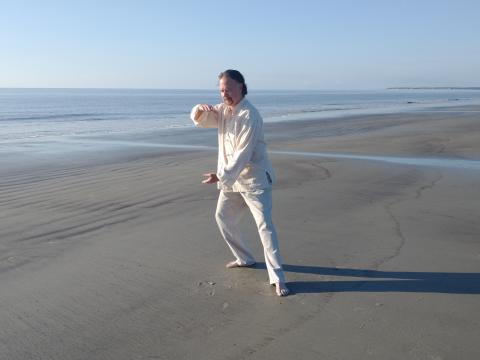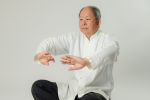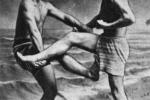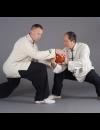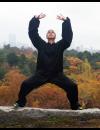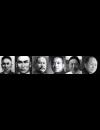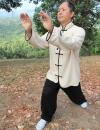Tai Chi and Qigong for Arthritis and Pain
June 3, 2024
Hypoxia, which is an oxygen deficiency in the tissues, underlies or complicates almost every health condition. This is the reason I have proposed the term Metarobic exercise to describe the effects of Tai Chi and related exercises on the body. 9 Min Read
Theory of Taijiquan and Health
May 20, 2024
Though the martial side of Tàijíquán is for strengthening the physical body and for defense, the scholarly side of Tàijíquán is for understanding human nature and comprehending the meaning of life. Only if (you) can cultivate these, both internally and externally, can you reach the Dào of balancing physical body and mind, and (also) the dual cultivation of human nature and physical body.
8 Min Read
The Power of Mass Tai Chi Recitals
April 29, 2024
In honor of World Tai Chi & Qigong Day 2024, YMAA Staff Writer Gene Ching examines tai chi demonstrations done in large groups. 6 Min Read
Five Regulators of Taijiquan
April 8, 2024
What is Tàijíquán? It is a martial Qìgōng study. Its training procedures are not different from those of other general Qìgōng (practice) and must follow the (same training) theory. These training procedures are nothing else but: regulating the body, regulating the breathing, regulating the mind, regulating the Qì, and regulating the spirit—five regulatings.
7 Min Read
Kumite’s Changed Role and Purpose in Sports Karate
March 4, 2024
These new techniques, footwork, steps, mindsets, strategies, tactics, and positions used in today’s sports-karate’s kumite illustrate best the discipline’s far-reaching separation from karate-jutsu’s kata: there is no kata anymore in sports-karate’s kumite.
7 Min. Read
Taiji Ball Qigong for Health and Martial Arts
-
December 13, 2010
Since taiji ball qigong is a combination of internal elixir (nei dan) and external elixir (wai dan) qigong practice, the health benefits of taiji ball qigong can be divided into two parts, the internal and external side. Taiji ball qigong is a soft-moving meditation. Through this meditative training, you will be able to concentrate and focus your mind at a higher level.
Tai Chi Intervention for Fibromyalgia
-
November 29, 2010
Over the past eight years I was given the opportunity to collaborate with Tufts School of Medicine researching the philosophy of Tai Chi and its effects on both arthritis of the knee and Fibromyalgia. I was asked by one of the researchers at Tufts School of Medicine to design and implement an intervention for both debilitating diseases.
Practice Any Time, Anywhere
-
November 1, 2010
Consistent daily training makes all the difference in achieving your rank. Because there is so much to learn and everything builds from kihon, it is important to make a commitment to try to learn something new about your martial art, no matter how small, every day.
Daoist Breathing Improves Pushing Hands
-
October 25, 2010
As an instructor at the YMAA School in Boston, Mass., my students often ask, “How can my pushing hands get better?” We all want to get better. Many people spend a lot of time looking for some facet of the art that they have missed or a trick to shorten their path.
About Junbi Undo—Part 2
-
August 22, 2010
"Lift things properly, hit things with care", this maxim should be at the forefront of your mind when embarking upon the study of traditional Okinawan hojo undo. Find your limit with each tool and exercise, and then carefully and methodically push that limit further and further. In doing so you will learn much about yourself and who you really are.
About Junbi Undo—Part 1
-
August 16, 2010
In an Okinawan karate dojo, warming-up exercises are known as junbi undo, preparation exercises. Within many Western schools of karate today, the warm-up exercises often have little in common with the mental activity that follows, neither do they always relate particularly well to the physical demands placed upon the specific muscle groups and tendons throughout the body that are about to be used in the karate training itself.
Form as a Vessel for Tai Chi Principle—Part 2
-
August 9, 2010
Once enrolled in my class, she was all over the place swinging her arms as if dancing to imaginary music (fine at home, perhaps, but not in Tai Chi class). This woman completely lacked structure, but more significantly, she lacked any desire for structure or willingness to consider its merits.
Form as a Vessel for Tai Chi Principle—Part 1
-
August 2, 2010
When the average person thinks of Tai Chi, the image that I expect most often comes to mind is one of some person or persons practicing a slow motion Tai Chi form sequence. This is quite reasonable given Tai Chi’s usual portrayal in the various media.
YMAA Taijiquan Lineage
-
May 31, 2010
The YMAA Taijiquan lineage of Dr. Yang, Jwing-Ming's first teacher, Grandmaster Kao, Tao can be traced back to Dong, Yingjie and Yue, Huanzhi, who were indoor disciples of Yang, Chengfu training the martial side of Taijiquan. Below is the complete lineage in detail.
Understanding Traditional Yang Style Taijiquan
-
May 3, 2010
In order to analyze the traditional Yang Style Taijiquan sequence, it is necessary to understand how martial sequences are created and the purpose they serve. Taijiquan is not a dance or abstract movement. A proper understanding of the root of the art will help you practice more effectively.
History of Yang Style Taijiquan (Tai Chi Chuan)
-
April 26, 2010
When he was young, Yang, Lu-chan went to Chen Jia Gou in Henan province to learn taijiquan from Chen, Chang-xing. Chen realized that Yang had great potential and taught him the secrets sincerely.
YMAA participates in World Tai Chi & Qigong Day April 24, 2010
-
April 19, 2010
It’s open house across the world, beginning in New Zealand, when World Tai Chi & Qigong Day will spread time zone by time zone across the globe through 60 countries and across six continents. There will be events in cities, towns, and villages world-wide embracing wisdom from all cultures of the world.
Sanchin Kata - Ancient Wisdom
-
March 8, 2010
The true history of sanchin kata is lost to time. Many will claim they know the true and correct history of sanchin kata, but factors such as where one chooses to begin and end can create one of many versions of the same history. The goal is to achieve a better understanding of sanchin kata through the mechanics, history, and applications of the kata.
Sanchin Kata, the Three Battles Sequence
-
February 15, 2010
The basic kata sanchin has existed a long time, and has developed into variations called saifa, seiyunchin, shisochin, sanseiryu, seipai, kururunfa, and suparunpen, which are still practiced.
¿Golpeas al objetivo?
-
December 14, 2009
Nunca dudé, al ponerme frente a Kanazawa sensei, que iba a "enchufarme". Pero tenía la absoluta certeza de que no iba a hacerme daño.
Are you hitting the target in Karate?
-
November 30, 2009
There was never a doubt in my head when I lined up to face Kanazawa sensei, I knew he was going to 'plug' me.
Remembering Chojun Miyagi
-
November 11, 2009
Among the huge number of so-called karate styles in the world these days, all can be traced back to the island of Okinawa, the largest island in the Ryukyu archipelago that stretches from the southern coast of Japan to the northern tip of Taiwan.
Beyond Your Barehand Taiji Form (太極拳套)
-
November 4, 2009
Once you have learned a basic Taiji form, whether you study Yang, Chen, or another style, there is still a great deal that traditional Taijiquan training can offer.
Lessons from the Taijiquan Form Seminar
-
September 17, 2009
I had the chance last weekend to teach at the YMAA Boston Taiji Form Seminar. I was tapped to teach the Two Person Fighting Set. YMAA canon maintains that the Fighting Set is the last thing a person trains prior to free sparring.
Hojo Undo: Traditional Karate’s Forgotten Training Methods
-
September 9, 2009
In an age where karate training is often viewed as a family pastime for some or a career path for others, many of the older and more traditional forms of training have slipped from use, replaced in many cases by a quest for physical entertainment.
